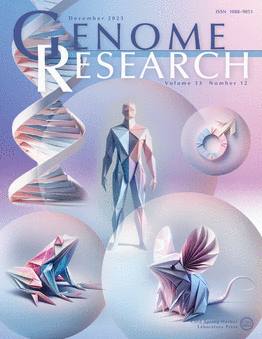3′-end ligation sequencing is a sensitive method to detect DNA nicks at potential sites of off-target activity induced by prime editors
IF 5.5
2区 生物学
Q1 BIOCHEMISTRY & MOLECULAR BIOLOGY
引用次数: 0
Abstract
Gene editing makes precise changes in DNA to restore normal function or expression of genes; however, the advancement of gene editing to the clinic is limited by the potential genotoxicity of off-target editing. To comprehensively identify potential sites in the genome that may be recognized by gene editing agents, in vitro approaches, in which the editor is combined with human genomic DNA and sites where editing may occur are identified biochemically, are important tools. Existing biochemical approaches for off-target discovery recognize double-stranded breaks generated by nuclease-based gene editors such as SpCas9, but novel approaches are needed for new editing modalities, such as prime editing, that nick one strand of DNA. To fill this gap, we have developed 3′-end ligation sequencing (PEG-seq), which can identify prime editor–induced nicks throughout the genome on in vitro digested human genomic DNA to identify potential off-target sites. Here we show that PEG-seq is an important addition to the off-target detection toolkit, enabling off-target discovery for DNA nicking gene editors such as prime editors.3 '端结扎测序是一种灵敏的方法,用于检测由引物编辑器诱导的潜在脱靶活性位点的DNA缺口
基因编辑对DNA进行精确的改变,以恢复基因的正常功能或表达;然而,脱靶编辑的潜在遗传毒性限制了基因编辑向临床的发展。为了全面识别基因组中可能被基因编辑剂识别的潜在位点,体外方法是重要的工具,其中编辑器与人类基因组DNA相结合,可能发生编辑的位点通过生物化学方法识别。现有的脱靶生物化学方法识别由基于核酸酶的基因编辑器(如SpCas9)产生的双链断裂,但需要新的编辑方法,如缺口DNA链的引物编辑。为了填补这一空白,我们开发了3 '端结扎测序(PEG-seq),它可以在体外消化的人类基因组DNA上识别基因组中主要编辑诱导的缺口,以识别潜在的脱靶位点。在这里,我们表明PEG-seq是脱靶检测工具包的重要补充,使DNA切割基因编辑器(如引物编辑器)能够脱靶发现。
本文章由计算机程序翻译,如有差异,请以英文原文为准。
求助全文
约1分钟内获得全文
求助全文
来源期刊

Genome research
生物-生化与分子生物学
CiteScore
12.40
自引率
1.40%
发文量
140
审稿时长
6 months
期刊介绍:
Launched in 1995, Genome Research is an international, continuously published, peer-reviewed journal that focuses on research that provides novel insights into the genome biology of all organisms, including advances in genomic medicine.
Among the topics considered by the journal are genome structure and function, comparative genomics, molecular evolution, genome-scale quantitative and population genetics, proteomics, epigenomics, and systems biology. The journal also features exciting gene discoveries and reports of cutting-edge computational biology and high-throughput methodologies.
New data in these areas are published as research papers, or methods and resource reports that provide novel information on technologies or tools that will be of interest to a broad readership. Complete data sets are presented electronically on the journal''s web site where appropriate. The journal also provides Reviews, Perspectives, and Insight/Outlook articles, which present commentary on the latest advances published both here and elsewhere, placing such progress in its broader biological context.
 求助内容:
求助内容: 应助结果提醒方式:
应助结果提醒方式:


